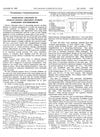Hair-Root Adaptation to Marasmus in Andean Indian Children
December 1969
in “
The Lancet
”

TLDR Children with marasmus have more resting hair follicles and thinner, less pigmented hair, showing long-term malnutrition.
The study from 1969 examined the hair-root characteristics of 15 Andean Indian children with classical marasmus compared to 13 healthy children of the same ethnic group. It found that marasmus-affected children had a significant increase in hair follicles in the telogen phase and a decrease in the anagen phase, with the mean bulb diameter of anagen hairs being less than a third of normal. There was also significant pigment depletion and a high proportion of dysplastic hairs without complete sheaths. These findings suggest that the hair-root adaptation in marasmus, characterized by a shift to the resting phase, is a response to chronic protein and calorie deficiency, aiming to reduce nitrogen loss. This adaptation differs from the response in kwashiorkor, which is an acute condition. The study indicates that hair characteristics can be indicative of nutritional status over time.





